
Welcome to the Experian Thought Leadership Hub
Gain insights into the fast-changing world of consumer and business data through our extensive library of resources.
299 resultsPage 1
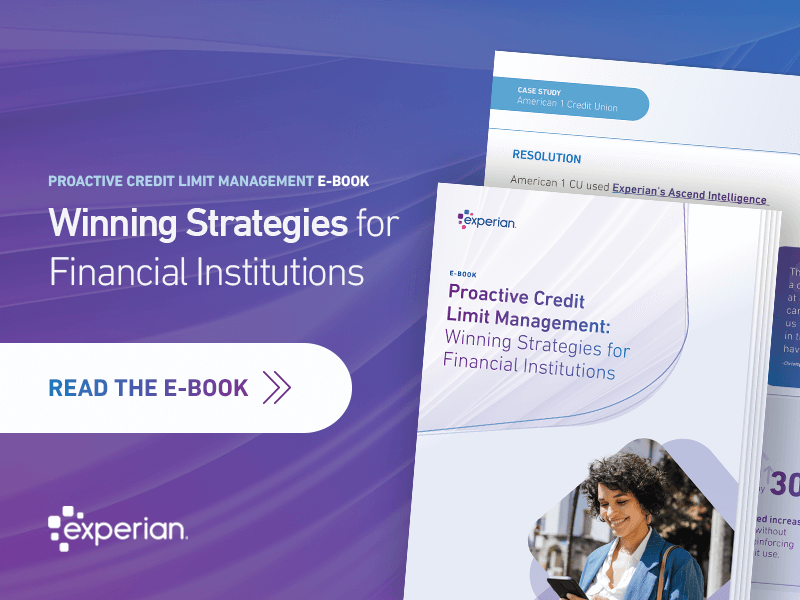 eBook
eBook
Managing credit limits effectively can help financial institutions maintain a healthy, profitable credit card portfolio. Proactively increasing credit limits can enhance your ability to provide excellent customer satisfaction and drive higher revenue.
Lenders can strategically implement proactive credit limit increases to:
Proactive credit limit increases give customers access to more credit, which can positively impact their financial health and help you drive business growth.
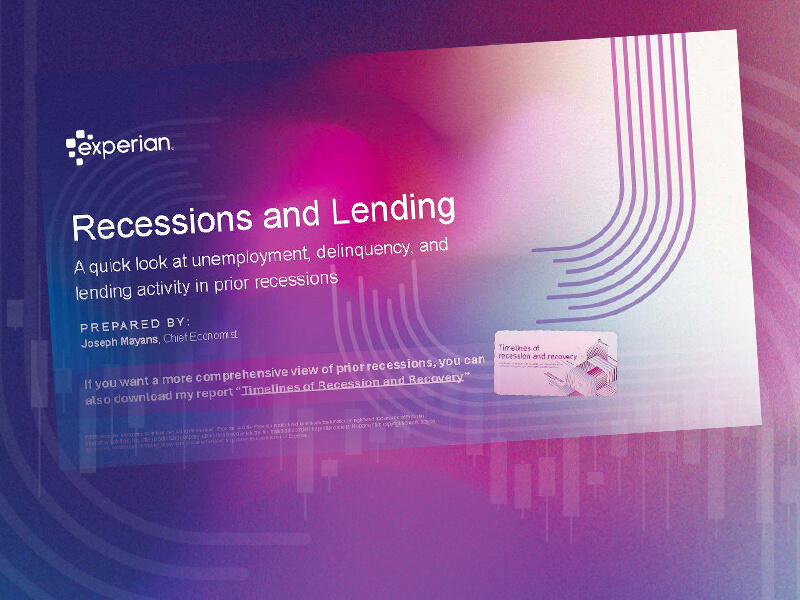 Report
Report
If we go into a recession, what does it mean for lending activity? What does it mean for delinquency? As banks, credit unions and fintechs grapple with these questions, sometimes it helps to look to the past for guidance.
In this latest Macro Moment, take a quick look back at prior recessions and their impact on unemployment, delinquency, and loan growth. Key insights include:
 eBook
eBook
Lending institutions can gain an edge on the competition by determining what happens when a loan gets booked elsewhere. With loan loss analysis, lenders can learn more about where these lost loans are booked, the average loan amount, the interest rate, the loan term length, and the average risk score.
Analyzing this information can help lenders:
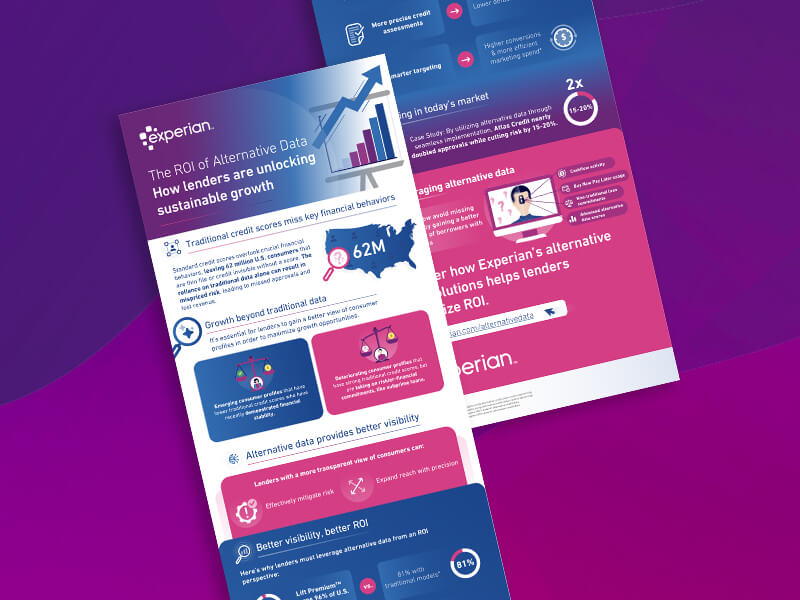 Infographic
Infographic
Standard credit scores overlook crucial financial behaviors, leaving 62 million U.S. consumers that are thin file or credit invisible without a score.
With alternative data, lenders can:
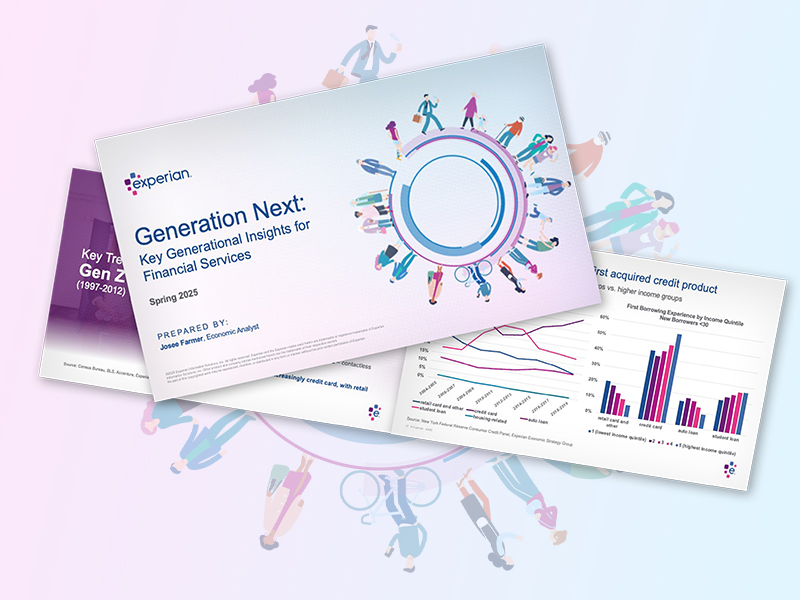 Report
Report
Download our report for insights into the major financial milestones your consumers are facing including:
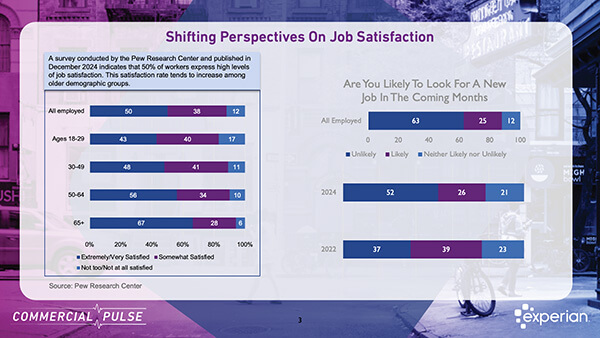 Video
Video
𝗧𝗵𝗲 𝗹𝗮𝘁𝗲𝘀𝘁 𝗘𝘅𝗽𝗲𝗿𝗶𝗮𝗻 𝗖𝗼𝗺𝗺𝗲𝗿𝗰𝗶𝗮𝗹 𝗣𝘂𝗹𝘀𝗲 𝗥𝗲𝗽𝗼𝗿𝘁 𝗶𝘀 𝗼𝘂𝘁!
While job satisfaction remains high ⭐, 𝟭 𝗶𝗻 𝟰 𝗲𝗺𝗽𝗹𝗼𝘆𝗲𝗲𝘀 𝗮𝗿𝗲 𝗰𝗼𝗻𝘀𝗶𝗱𝗲𝗿𝗶𝗻𝗴 𝗮 𝗷𝗼𝗯 𝗰𝗵𝗮𝗻𝗴𝗲 ⚠️.
Also, union membership is at a historic low—𝗷𝘂𝘀𝘁 𝟵.𝟵%—but public support is rising, especially among younger workers. These dynamics are reshaping employer-employee relationships, with big implications for small businesses.
𝗢𝘁𝗵𝗲𝗿 𝗸𝗲𝘆 𝘁𝗮𝗸𝗲𝗮𝘄𝗮𝘆𝘀:
✔️ Inflation cooled to 2.8%
✔️ 228K jobs added in March
✔️ Unemployment rose to 4.2%
✔️ Consumer sentiment dipped to its lowest since 2022
Small businesses continue to show resilience, with optimism inching up and business starts outpacing pre-pandemic levels.
Check out the full report to see how these trends could impact your strategy!
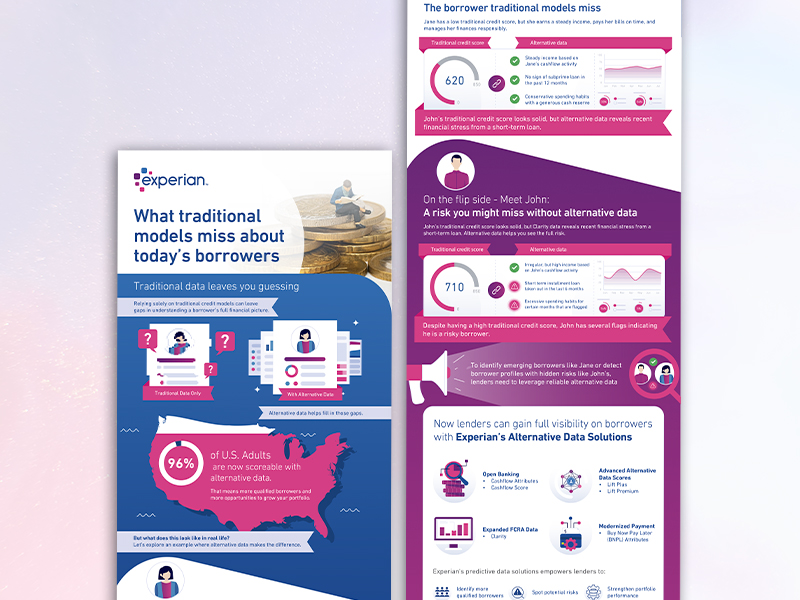 Infographic
Infographic
Relying solely on traditional credit scores can leave you with a limited view into consumers’ financial stability.
See how integrating alternative data can help you:
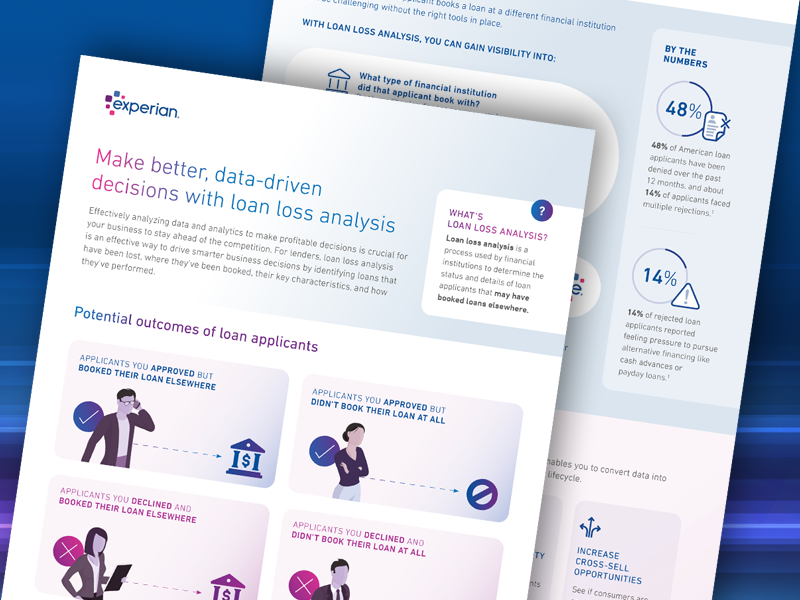 Infographic
Infographic
Loan loss analysis is an effective way for lending institutions to drive smarter business decisions by identifying loans that have been lost, where they’ve been booked, their key characteristics, and how they’ve performed.
With loan loss analysis, you can gain visibility into:
Accessing this information can help your organization validate your lending policies or find out where you can make adjustments to remain competitive in the market and win more business.
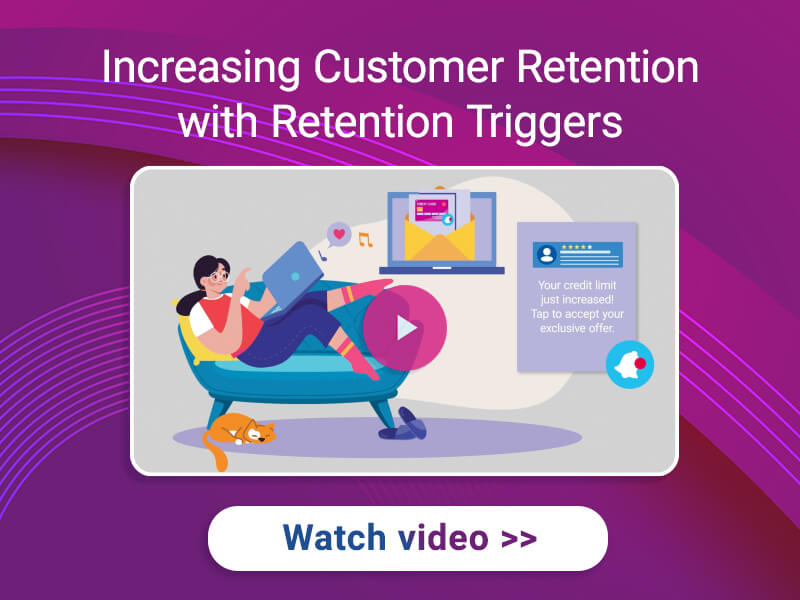 Video
Video
Learn how Experian's Retention Triggers can alert you when your customers shop for new credit or improve their credit standing.
By leveraging this solution, you can then: